ThesisesGLOBAL MEDIA SECTION
Today media constructs reality. Digital technologies change the society, politics and economics, but we are also changing with them. Technologies are extensions of our nervous system. We mutate gradually and become part of it. Under the pressure of the infinite number of cameras, stucked in the web, on one hand, we loose our freedom. But on the other — we expand our rights day by day via technological innovations. Art is not an outsider now, it's a trendsetter with new ideas and introduction into various fields is not directly connected to it. Only art with its intuition and power of imagination not limited by either discourse, or status, or norm becomes able to perceive the vague outlines of the future.
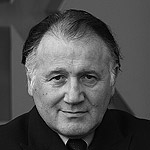 Peter Weibel Peter Weibel
Curator of the main project of the 4th Moscow Biennale, ZKM Centre for Arts and Media Technology, Karlsruhe, Director, Germany
The future of media. From visual media to social media
In 20th century a technology of production was developed, which in the visual arts produced visual media (photography, film, video, computer). The mass media (radio, television, cinema) developed also a technology of distribution that was centralized and uni-directional. The 21st century develops
a personalized distribution technology. With the advent of the internet a distribution technology for everybody is at hand. With the advent of photography the class of experts, called painters, lost the monopoly on image making. With the advent of the new media the experts of creativity, called artists, lost the monopoly on creativity. “Everybody is an artist”, Joseph Beuys, 1970. With the advent of the internet the mass media looses its monopoly on distribution. Today everybody can be an artist and a sender. Today we have not only art for the masses, but also art of the masses. The platform for the distribution of their works, their museum, is the internet. What will the artist in the future do? How will art change under these new conditions?
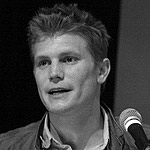 Olof van Winden Olof van Winden
Director of the Netherlands Media Art Institute, Netherlands
Media arts and digital culture: general remarks
The experiments with new technologies defining the development of the scientific progress always seemed to be a prerogative of science. but today it becomes a field of the absolutely new field of the contemporary art. The means of communication in such works is life-like matter and the main method of investigation is the combination of the characteristics of a living organism and a technically reproductable product. Art which is born under such circumstances of the artificially formed cannot but make this artificiality its inevitable theme. For it is not sufficient to technically bring life in, but it is necessary to master it artistically. More than any other instruments of the contemporary art new biomedical and informational technologies contravene the artistic status of a work, because they allow direct manipulation of the target state of a living organism. The subject of the report are various strategies of the artistic mastering of the reality in the context of the creation of biologocal and abiologocal nature.
 Joseph Backstein Joseph Backstein
Moscow Biennale of Contemporary Art, Commissar, Russia
Dialectics of new media
Unlike theatre, literature, music and cinema, fine arts are multimedia from the beginning.
The amount of media, synthesized in one work of contemporary art, is countless. Every mobile object is a separate media, it is due to them that plurality and polyphony of continuums is created. This is again the difference with monomedial arts (the only medium of cinema is film, of literature — word, of music — sound).
Fine art is not manufacture. An artist is always a lone handicraftsman, therefore the criteria of quality and professionalism are much more vague, that in the other fields of creative activity. Reputation and authority play a major role. Some colour spots cost a million, others not. Why? Sometimes it is impossible to say…
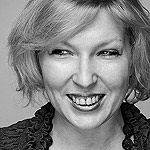 OLGA SHISHKO OLGA SHISHKO
Director of Pro&Contra of Media culture Symposium, Director of MediaArtLab Centre for Art and Culture, Russia
Media invasions: practices, methods, spaces
Media art with its history and original non-commercial orientation, its wish to leave the ordinary space of the conventional art and make
an invasion into mass media and social practices, has not always been on the same plane with the history of the development of the
contemporary art. Media artists use the broadest spectrum of instruments — from a simple video camera and computer to the most difficult technologies and robotics.
The key feature of media art is its interdisciplinary character. Media art is in some sence an octopus. By its tentacles it is everywhere, but ist heart is in the contemporary art. The criterion of quality inmedia art has always been ist innovative character from the point of view of an artistic idea and technologies, applied in this context of art.
Media projects often exist on the level of technological experiments or texts, which anticipate the further development oft he contemporary art. Sometimes no material product is left. What is important in the media art is not so much the existence of a product, but the very stories of regeneration, of synthesis of different creative aspects
inside the media space, guessing about where do art and culture lead us all.
Media art creates a new language and speaks new languages. The viewer is given an opportunity to read in this language, and the media artist — to create media active projects must not onle orientate in the mental spaces but also be able to work on other levels and with new channels of communication.
Traditionally art is among other things an historical archive. The more media "pervade" our life, the faster we loose our memory. Media author, who sometimes becomes a pseudo scientist, then a pseudo politician, then pseudo showman, is the first to become aware of how to allow this or that mediat o use the power of another one and
liberate it.
Conceptual and attractive elements are combined in the media art. The digital media themselves demand involvement and simultaneous application f all our perceptive capacities. The paradox is that we rest most fully exactly when we are most fully involved. However there is a danger in the media art: as soon as we start to perceive a work of media art on the attractive level, it turns into entertainment and often looses the inner meaning. What is important is the "virus" which media art recived from the contemporary art — the viirus of reflection, utopia, poetry.
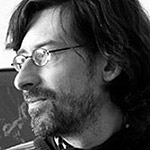 Alexei Shulgin Alexei Shulgin
Artist, Russia
Elena artemenko
The Rodchenko Moscow School of Photography and Multimedia, Russia
Artlet, art of the globalized world
Artlet, light art, is art, made in short term, the main method of production of which is recombination, combining of incompatible, placing object into a paradoxical context. In the production of artlet ready-made and copies of objects, people, animals are used, with minimal participation of an artists, no practical skills are needed from him, and if they are needed, hired labour is used. An important characteristic feature of artlet is that almost complete impression of it can be received through photo and video documentation. Artlet also uses universal symbolic language understandable in the whole world, which allows it to spread with the speed of light through the internet, like a virus from one blog into another. the main thing about artlet is that it should be funny, at least amusing, not boring! The term artlet was introduced by Aristarkh Chernyshev in 2007. The lecture is … with pictoresque illustrations. the presentation of a software generation of artlet in real time is also planned.
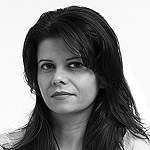 Vanessa Ramos-Velasquez Vanessa Ramos-Velasquez
Media artist and researcher, Germany/Brazil
Digital anthropophagy
The background of my discourse on Digital Anthropophagy comes from the “fair use” conundrum of the Information Age. One of my own art practices is to create films from found footage and openly exposed media. I metabolize these materials into new contexts. In the creative process I often thought of the Anthropophagic practices of some Brazilian indigenous tribes when they came into contact with their colonizers. The indigenous cannibal honorably eats the foreign in order to incorporate his strength, experiences and qualities and to see through the cannibalized foreigner’s eyes. But I find that in today’s digital culture, we unceremoniously consume the world around us in a globalized structure, thus quickly acquiring worldly references and spitting them out in a personal but also somewhat homogenized way. We have thus become both the cannibal and the cannibalized because of the wide and immediate access to information and the incredible reduction of time it now takes to consume that widely available culture. Over five hundred years later, that exchange has now become cross-pollinated, and happening in an inhuman speed cycle. I offer an analysis of Information Metabolism which drives human experiences. I humbly hope that this presentation furthers the discussion on “fair use” of media, leading to a simplification of global “fair use” cultural models and practice.
SCREEN AND INTERACTIVE MEDIA SECTION
Co-curated by Karina Karaeva, Head of Cinema and Video Art Department at National Centre for Contemporary Arts (Russia)
Media art draws its participants into an active interaction with an object of art, using various audiovisual means including video, technical vision technologies, telecommunications, sensory feedback devices, acoustic characteristics, performance basis, site-specific and theatre experiments. Preference is given to projects where the interactivity principle is not something additional, but a central element of meaning and where distinctiveness and relevancy of the concept is completed with a high-quality technical rendering.
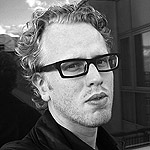 Boris Debackere Boris Debackere
Art director of V2_lab at V2_Unstable Media Institute, Netherlands
Augmented Dreams
Many forms of artistic expression might be considered as an augmentation of reality. What are the challenges for “Augmented Reality” — technologies that enhance physical reality by layering interactive computer-generated content to it — when used as an artistic medium? The artist should critically examine their implementation. A key question in the creation of an art project is: what should the work communicate and what should the audience experience?
Cinema could be an interesting case study, it has stimulated our imagination for more than a century and numerous successive media strive towards achieving a resembling experience in their audience. In order to emerge, the cinema illusion asks for imagination. Film functions as a trigger for the mental processes that generate the true inner illusion.
The present accelerated progress of information technologies are inevitably defining new directions of how moving images will be experienced in the future, changing the relation between the creator, his tools and the viewer. Digital media do not represent, they generate. They are software rather than hardware and unlike any other medium we have ever known, ephemeral: transforming and growing systems in itself. The virtual tool becomes a (re-)active actor in the creation of dynamic processes and demands for different approaches to those from the era of mimicking media.
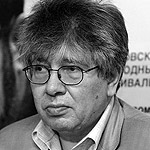 Kirill Razlogov Kirill Razlogov
Director of Russian Institute for Cultural Research, Russia
The future of the screen and post-screen forms of art
The future of screen and post-screen (virtual reality) forms of art, self-expression and interactivity is played out simultaneously
on several parallel “stages”:
- In videogames;
- In mobile telephony;
- In the Internet;
- In exhibition projects and installations;
- In the inflation of technical revolutions in the field of movie making and cinema showing (Dolby, 3D, 4D, DCP etc.)'
- In sci-fi movie plots;
- In different kinds of the combinations of the abovementioned (eXistenZ by David Kronenberg).
This fundamentally multidimensional combinatorics must become the first object of consideration and of the technological, aesthetical and culturalogical analysis.
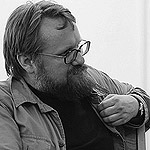 Constantine Bokhorov Constantine Bokhorov
PhD in Cultural Studies, curator, Russia
Interactive media — between attractiveness and social criticism
The concept of interactivity in art was borrowed from communication studies as a qualitative characteristic of a communicative action which can be either one-way or interactive. In various modernist practices interactivity was only describing the semantics of an art action with no claims toward being an art form. Only in the last decade have the new technologies become art media and acquired an independent meaning. Formalizing interactivity has one significant disadvantage. Professor Erkki Huhtamo says that instead of pursuing serious artistic and intellectual aims artists are often busy with various technological tricks.
An interactive game created by a programmer may have an artistic interface and a highly developed story line, but nevertheless it won’t be a work of art. A real interactive artwork must be “multilayered” and “open”, its meaning can under no circumstances be exhausted. The problem is defined thus: in spite of the popularity of interactive art works with the audience and critics, the natural synthesis of the three heterogenous components have not yet taken place. These are technology, interactivity as a form of communication and aesthetic as such.
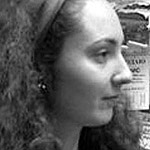 Karina Karaeva Karina Karaeva
Head of Cinema and Video Art Department at National Centre for Contemporary Arts, Russia
The trick of the screen media. The death of idea
In the situation of the absolute discrimination of media, in subdivision “screen media”, i.e. visual media, the possibility of the realization of a pure image is gone, demand for it vanishes. Synthetic, sometimes artificially created media need a certain regulation, which allows going beyond academic definition. Critical estrangement, emerging due to the multi-levelness and expansion of the screen media, allows conducting an esthetical selection, manifesting the death of the aforesaid media. However this death determines the revival of the idea phantom on the new platform of the visual art. An attempt to catch the trick of the media, attempting to stay in the field or at least on the wave of the relevance.
HYBRID MEDIA SECTION
Со-curated by Daria Parkhomenko, Director and curator of LABORATORIA Art&Science Space, (Russia)
The main characteristics of hybrid art are its borderline nature, fluidity of forms, its use of research practices in which interdisciplinary creative groups are involved. Works of hybrid art are very sensitive to technological and scientific innovations and expand the borders of their comprehension. This type of art is frequently realized in the form of research or experiment, resulting in new forms: generative art, transgenic art, science-based performance strategies, robotic art, multi user environments, virtual environments and so on.
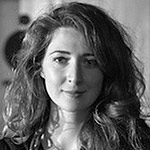 DARIA PARKHOMENKO DARIA PARKHOMENKO
Director, curator of LABORATORIA Art&Science Space, Russia
Case study: Analysis of trends and winners in the nomination Hybrid Art at Ars Electronica Festival 2011
The main tendency evident in the choice of the prize-winners of the festival Ars Electronica 2011 in the nomination Hybrid Art is that radical performances are preferred where the artists use their own bodies and bodies of animals as material for the artistic research. The jury picked out the works devoted to long-term research, scientific-technological performances, which open the understanding of new matters, projects, where macroscopic and microscopic merge. The attention has also been given to the projects in which artists actively engage the viewers to the participation in the creation of a work of art.
In the report four cases representing these trends will be analyzed: May the Horse Live in me (Art Orienté objet), Mucilaginous Omniverse (Evelina Domnitch, Dmitry Gelfand), Inside the Tropospheric Laboratory (Agnes Meyer-Brandis), STiMULiNE (Julien Clauss, Lynn Pook).
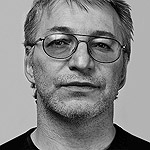 DMITRY BULATOV DMITRY BULATOV
Artist, art theorist, curator of the National Centre for Contemporary Art (Kaliningrad Branch), Russia
TECHNO-BIOLOGICAL ART: New state of the living
The experiments with new technologies defining the development of the scientific progress always seemed to be a prerogative of science. but today it becomes a field of the absolutely new field of the contemporary art. the means of communication in such works is life-like matter and the main method of investigation is the combination of the characteristics of a living organism and a technically reproductable product. Art which is born under such circumstances of the artificially formed cannot but make this artificiality its inevitable theme. for it is not sufficient to technically bring life in, but it is necessary to master it artistically. More than any other instruments of the contemporary art new biomedical and informational technologies contravene the artistic status of a work, because they allow direct manipulation of the target state of a living organism. The subject of the report are various strategies of the artistic mastering of the reality in the context of the creation of biologocal and abiologocal nature.
 ATILLA NEMES ATILLA NEMES
Program counsellor of The Kitchen medialab Centre, Hungary
The only spicyinnovation lab
In my lecture I give a short presentation of Kitchen Budapest, "The only spicy innovation lab" and Fictionlab, focusing on: types of labs, funding issues, activities, recruitment policy and possible outcomes. I will highlight some issues related to public interest, community and network development and business potentials in our labs.
I will show some examples of hybridization and point out the importance of multidisciplinary research projects in Kitchen Budapest. I will also make a short introduction to two new research projects of Fictionlab on mapping media labs worldwide: MAPPA and Labster.
In the second part I will talk about the importance of speculative culture, ‘future thinking’ and the importance of sci-fi in ‘transdisciplinary’ collaborations (e.g. food in the work of fo.am or the OS Kantine projects at fictionlab.hu) and I will introduce a new project I am involved in recently — a collaboration with a cult restaurant in Budapest based-on-pig.
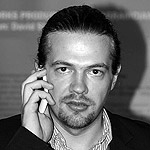 DMITRY GALKIN DMITRY GALKIN
Professor, media researcher, Tomsk State Univercity, Russia
The ideal object of artificial life and the aesthetics of the hybrid media
Theory and methodology of artificial life (AL) have become an important stimulus in the development of the media art and hybrid media already in the beginning of the 1990-ies. The idea to receive models of biological life as it could be (K. Langton) was enthusiastically embraced and developed by artists (K. Sims, W. Ligththam, K. Zommerer et al.) On the other end of this conventional line there are real synthetic organisms and ecosystems, including absolutely new ones, non-existing in nature. Somewhere in between there is place for digital replica, robotized models and hybrid (living tissues plus technical devices) forms of AL. Computer stimulations of organisms and ecosystems have already became part of the contemporary art thanks to the works of K. Sims, K. Zommerer and L. Mignolo, P. Brown et al. The art strategies vary from graphical generation of abstract pictures to the creation of screen likenesses of the objects of flora and fauna and scale models of ecosystems. Combination of living tissues and technological systems is being actively achieved through implantation. Technological avant-garde in this field is represented by the works of Stelarc and Symbiotica group. Today we can define the horizon of the relevant topics and issues, around which aesthetical concepts may be developed: inevitability and invariance of evolution, influence of the cultural (technological) intervention on the real ecosystems and predictability of the consequences of the AL manipulations, ethical and socio-political issues of the creation of AL.
FROM AN IDEA TO THE EVOCATION. PRESENTATIONS AND Panel discussion
Moderators: Dmitry Bulatov, Daria Parkhomenko.
Partisipants: Boris Debackere (V2_ Unstable Media Institute, Netherlands), Kate Gandrabura (Special Projects Department, ROSNANO, Russia), Attila Nemes (The Kitchen medialab Centre, Hungary), Irina Aktuganova (Techno-Art-Centre, National Research Centre “Kurchatov Institute”, Russia), Alexei Shulgin (Electroboutique, Russia), Alina Ignatova (MediaArtLab, Russia), Anna Belyaeva, Olga Barkovskaya (Independent curators, Russia), Mikhail Burtsev (Neurosciences department at the NBIC-centre — National Research Centre at “Kurchatov Institute”, Russia), Martin Honzik (Next Idea, Ars Electronica, Austria).
Online participants: Dietmar Offenhuber (Artist, Austria), Oron Catts («SimbioticA» Laboratory, Australia), Ksenia Fedorova (Senior Researcher, Ekaterinburg branch of the NCCA, Univercity of California (Davis, USA), Russia).
MIKHAIL BURTSEV
Neurosciences department at the NBIC-centre — National Research Centre “Kurchatov Institute”, Russia
INFUSION of science into art
Influence oft he modern science on the life oft he society increases, generating new knowledge and technologies, making each of us change our ways of life and world view. Science becomes one of the determinants of the cultural evolution. His makes inevitable the development of the schools in art which integrate science and art. INFUSION is a project aimed at exploring possible ways of symbiosis of art and science.
ANNA BELYAEVA, OLGA BARKOVSKAYA
Independent curators
Hybrid media
Already in 2000-ies the world tendency shows that hybrid art now lives not just in a narrow segment of the “contemporary art”, but is being spread wider and wider and becomes a new trend in the world mass culture. It happened due to a powerful burst of technologies and their popularization among the people. We evidence interbreeding of different energies in the example of the more and more popular among the progressive brands employment of various means of new media art for their own advancement.
The use of the same expressive means for advertising and for artistic messages — is it a positive or a negative trend? The audience of the hybrid media art on one hand is very restricted and consists of progressive and creative young townsfolk. On the other hand, as a rule hybrid media evokes more emotions and understanding from an unprepared viewer, than a regular photo exhibition or a painting by an old master. Does this indisputable fact enrichor marginalize culture? Are hybrid media interesting as an expressive means — for artists proper?
MARTIN HONZIK
Next Idea, Ars Electronica, Austria
Hybrid Art
The “Hybrid Art” category in is dedicated specifically to today’s hybrid and transdisciplinary projects and approaches to media art. Primary emphasis is on the process of fusing different media and genres into new forms of artistic expression as well as the act of transcending the boundaries between art and research, art and social/political activism, art and pop culture. Jurors will be looking very closely at how dynamically the submitted work defies classification in a single one of the Prix categories of long standing.
Irina Aktuganova
Techno-Art-Center, Russia
Popularization of science and science art
In 2009 and 2011 the Dynasty Foundation together with the Saint-Petersburg Agency 21 and the Saint-Petersburg TechnoArtCentre has developed and realized two popular science festivals with exibitions as their key projects. The first project, Science as Suspence, shown in 2009 was a science art exibition curated by Dmitry Bulnygin. Then we have brought to Moscow the unquestionable world stars of science art to demonstate contemporary trends of science and art symbiosis, to attract the audience attention to scientific problems and to scientific and educational activities of the Dynasty Foundation.
The 2011 project Life. Science Version also included works by science artists, but there they were part of the continious popular science concept simultaneously aquiring context and enriching the consept itself. 17 artists participated in the exibition, 9 of them were Russian.
KSENIA FEDOROVA
Ekaterinburg branch of the NCCA, Univercity of California (Davis, USA), Russia
Locative Media. Existing Practices and Perspectives for Russia
Geotagging, biomapping, telepresence, augmented reality allow to line the space not only according to abstract Big narratives, but based on individual (psychosomatic) sense-perceptions. How would an artistic «psychogeophiscs» project be possible in Russia?
ALINA IGNATOVA
MediaArtLab Centre for Art and Culture, Russia
At the borderline of art and a PR project
When major contemporary artists worked at designing Louis Vuitton’s flagship store on Champs Elysees, the guests at the exhibition nodded their heads knowingly: “The Sistine chapel frescoes, too, were sponsored by wealthy patrons”. When as early as in the 1980’s the Philip Morris company was accused of using art for tobacco products promotion. its representatives assured us they assigned hundreds of millions for culture without any profit in mind. When Hugo Boss founded its own contemporary art award, the journalists have at once unflatteringly compared it to the yearly salons of the French Academy with their biased appraisals of XIX cenrtury painting. And finally when Chanel suggested its famous 2.55 bag as an object for artistic inspiration and sent the finished works on a world tour in a mobile container museum, the audience didn’t exclaim: “Is this supposed to be art?!” New Yorkers just became outraged at the use of the Central Park where the container was placed for advertising fashion house products.
The PR departments at Chanel and Hugo Boss stress the visual appeal and technology in exhibited objects — art is an integral part of their corporate culture based on “common” values: technology, quality, inovation and ambition. Regardless of their content and the artistic quality of an individual work these projects transmit the sponsor-owned corporate worls view to the audience.
TACTICAL MEDIA SECTION
Co-curated by Tatiana Volkova, Director of ZHIR Gallery (Russia)
Media activism projects aim is to change social life, namely media interventions of public space, locative media, digital communities, creative interfaces for social networks and communicative communities, art in the form of video games. This section and the corresponding nomination is oriented to support artistic innovations in developing media consciousness and social interaction by transcending geographical, cultural and other borders and reconsidering the relations between individual, political and financial structures.
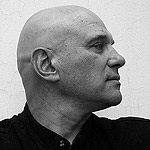 ANDREY VELIKANOV ANDREY VELIKANOV
Artist, philosopher, art theoretician, lecturer, Russia
The artist in the mediaspace. Liberty and responsibility. Is everything allowed? Between productive provocation and disorderly conduct
The term “tactical media” originally appeared to specify various actions in mediaspace, which goal is the fulfillment of the anarchist principle of “direct action”. In its turn this principle means change of bureaucracy for the sum of free creative statements. Today we can understand it in the broadest sense of the world. In the first instance there is plenty of fairly legitimate tactical media festivals, and it gives to the anarchist term the bourgeois flavour. In the second instance, the tactics in the information space became not only usual but even obligatory thing, and not only in art, but also in advertising, politics and other fields. Street activism doesn’t stay on the streets anymore, it heaves the information wave, which sometimes becomes more powerful than cyber-activism. And indeed, bad is that artist, who in the process of creating his work and planning the exhibition, doesn’t think through the certain tactics in mediaspace.
When a number of works, submitted to the media art competition should be evaluated by the qualified jury, the problem of evaluation principles is inevitable. While this practice remained within the frames of anarchist conceptions, everything was simple enough. The quality corresponded to the level of conflict obtained or to the sophistication of some invective statement, spread on the Internet. The more high and visible was the middle finger of the artist, the more respected was the tactical media activist by his fellow brothers.
But now we face the necessity to find more rational criteria. More importantly, there are, obviously, the examples of the actions (and some of them took place before the appearance of discussed term), which had a great impact on culture, and sometimes simply changed its course – in spite of being just a ruffian prank. So, which principles do we need to evaluate these phenomenons? And the main thing – is the author able, by his provocative action, to plan not only conflict and destruction, but something more productive?
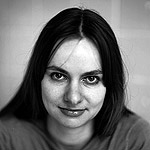 Tatiana Volkova Tatiana Volkova
Director of ZHIR gallery, Russia
The development of tactical media in Russia
The scholars speak of the transition from informational to postinformational society. the epoch of media communications discredited itself, replacing information with simulation, which led to the estrangement of humans from social process, to social apathy. The new arriving concept is of the “new sincerity” — ideology of concious participation, experiencing, collective action.
Art, entering the social space with the call to social change, has formed in our country only recently. Artists create new forms of collective existence, join with subcultures and social movements, proclaim themselves activists, i.e. active participants of the contemporary socio-political life. It is evident that the internet has made possible the existence of an international network of media-activists, exchanging experience and doing the common work without any coordination from above.
PRESENTATIONS AND PANEL DISCUSSION
Moderators: Tatiana Volkova, Ivan Zasursky.
Participants: Dmitry Model (Media activist, Russia), Andrey Velikanov (Artist, philosopher, art theoretician, lecturer, Russia), Alexandre Bidin (Media activist, Russia), Artem Loskutov (Media activist, Russia), Roman Minaev (Media artist, Russia), Anton Nikolaev (Artist, Russia), Victoria Lomasko (Artist, Russia), Dmitry Zhvania (Media aktivist, Russia).
Online participants: The Yes Men (Artists, USA), Avram Finkelstein (Activist, USA).
DMITRIY MODEL
Media activist, Russia
Why media activism is also contemporary art?
Tactical media develop at the interfaces between modern technologies and pure art, they look for new forms of presentation of information. Furthermore, not counting on mass distribution of their messages, media activists organize channels of transmission themselves. Exhibitions and festivals of contemporary art may be such spaces for distribution.
DMITRY ZHVANIA
Media activist, Russia
Tactical media must become tactile
The very name “tactical media” has a connotation of them being created for attaining some strategic goal. Usually when tactical media are defined their low-budget and low-tech, i.e. their samizdat character is stressed. Also it is their short-term existence — for the period of network formation or conducting actions in cyber-space. But in my opinion these are not the main features of the tactical media. If we talk about tactical media, we must see their role, be aware of their goals and aims in the general media strategy.
In my view the general goal of all tactical media is turning an “information consumer” into an “information user”. Consumption presupposes passive digestion and making use of something — active application. When a person goes to a “tactical resource” he must receive a kind of “application sheet”. At the least tactical media stimulate his thinking.
In our work tactical media allow to create a “certain view on the subject” not in a “mentor” way or with the help of traditional propaganda, but by means of bringing people into the process of creation of informational field and creating new meanings.
ANTON NIKOLAEV
Artist, participant of Art group Bombilae, Russia
We, bombilae, always disliked the necessity to create works, we ourselves seemed to be works of art. The only work which could satisfy us is a documentation of an endless happening of our whole life. Of course it is impossible, because any documentation of life cannot contain life completely; there is an inevitable reduction in the process of shooting. To make the distortion of the “recoding” of life into video minimal, we aimed at making the shooting as neutral as possible, preserving only the functionality of following the events and reflecting the significant culminations. Therefore our method is close to the tactical media.
For me the tactical media is a means to transmit the events of the real life with minimal distortion. It is possible that in future all life will change into an endless reality-show and this will push all other cultural forms to the margin.
VICTORIA LOMASKO
Artist, Russia
I practice social graphics. All my works are meant for publication in mass-media or edition in some printed form (books, postcards, etc.). I am not interested in “whether it is contemporary art or not?” Social art is meant for communication with the mass audience. It is only possible together with the development of such genres as caricature, poster, political illustration, social graphical reportage (during the Soviet time it was the experience of the travelling brigade of the Crocodile magazine and the albums of drawings on social topics). Unfortunately, after the breakdown of the Soviet Union the traditions of the political and social graphics were almost interrupted. Now it is necessary to create new graphic forms based on the previous experience and able to reflect the contemporary problems of our society.
THE YES MEN
Artists, USA
In the 90-ies thousands of disillusioned young men, who stopped to believe in the goodness of the materialist culture, understood that they are left to themselves and that they themselves operate the great amount of the digital media. Internet became a place for great many parallel “realities”, which were political by default in there deviation from the converging severity of the corporate media. New inventive mass media with unimaginable potential of political influence appeared. It was not constrained by the reactionary jealousy and classical crypto-fascist hermetism which had not allowed the world of art to have influence on politics since mid-70-ies. (2004, Doug Harvey).
AVRAM FINKELSTEIN
Activist, USA
If art has a responsibility, it is communication. So how can art compete in a media landscape that’s inundated with content? A shared language is needed to do it. If there is such a language in America, it’s advertising. When appropriating an advertising voice the artist also assumes it’s primary, strategic fixation, the one that is simultaneously communal and personal, the universality of desire. Desire is the purview of advertising, and it’s woven into everything. It’s why we aspire to our future. It’s conjoined with our longing for the past. It’s behind our compulsion to become socially knowing, and our hunger for technological prostheses. It’s how we gauge our worth. So all social messages need to sit comfortably within the context of desire, even political ones. The deployment of new media technologies is an essential component of message relevancy, but if a hand held device is just a delivery system, like television or radio or the broadsheet before it, what does this actually mean?
MEDIA FESTIVALS SECTION
The subject of media culture and interdisciplinarity of most contemporary projects and phenomena could not be fully described without giving special attention to media festivals — the most publicised, mass-attended and colourful events for all those connected to media art. We have invited to the PRO&CONTRA symposium the organizers of Austrian Ars Electronica, Barcelona’s LOOP, Berlin’s CTM. All these are festivals directing their attention to borderline projects on the verge of art, science, technologies and media activity. They work with the non-traditional exhibiting forms, they reorganize urban spaces and look at social initiatives or research projects as art forms. They form a new understanding of the role of media art and culture in our world.
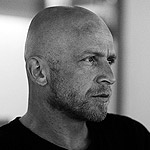 Martin Honzik Martin Honzik
Head of Festival/Prix department, Austria
Prix Ars Electronica
Since 1987, the Prix Ars Electronica has served as an interdisciplinary platform for everyone who uses the computer as a universal medium for implementing and designing their creative projects at the interface of art, technology and society. The Prix Ars Electronica is one of the most important awards for creativity and pioneering spirit in the field of digital media.
The aim of this art & technology grant bestowed annually by voestalpine and Ars Electronica is to honor new and extraordinarily promising ideas and to support the process of developing them further. Artistic and social innovations are what we’re looking for; technological and scientific approaches too! Whatever it is, the accent should definitely be on striving to conceptualize something in a totally fresh way, advancing it to the next level and significantly enhancing it thereby. Taking the next big step forward.
We seek to nurture projects that deal with three themes of key importance to humankind’s future: energy, mobility and access. Alternative models for improved ways of using energy and resources; concepts and ideas for a world that has become more mobile and more globalized; measures and projects designed to enable broader access to and participation in the possibilities afforded by our modern Information Society.
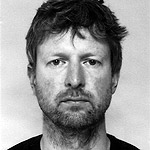 Remco Schuurbiers Remco Schuurbiers
Co-director of CTM — Festival for Adventurous Music and Related Arts, Germany/Netherlands
CTM Festival. Festival for Adventurous Music and Related Arts
CTM is a prominent international festival dedicated to contemporary electronic, digital and experimental music, as well as the diverse range of artistic activities in the context of sound and club culture. Since 1999 it takes place concurrently and cooperatively with the Transmediale — international festival for art and digital culture, Berlin.
CTM presents projects that experiment with new aesthetic parameters, develop possibilities for informational and economic self-determination, and reflect on the role of contemporary music against the backdrop of technological and social transformations. Now more than ever, music emerges as a laboratory for multiform experiments and as an active agent that allows for new cultural techniques to be tested and proffered to the wider world. CTM puts the focus on direct experience, risk-taking and personal interaction.
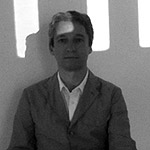 Emilio Alvarez Emilio Alvarez
LOOP festival director, Spain
LOOP
Since 2003, the LOOP/ SCREEN FESTIVAL has consolidated its position within the international art calendar, as one of the main international events entirely dedicated to moving-image art. The festival is a city project aimed at connecting local and international platforms, resulting in the creation of alliances between institutions, artists, curators, festivals, producers, distributors, galleries and universities. Therefore collaborative projects contribute to shape the character of every year’s festival. Very often we select or invite foreign program proposals for which we find a hosting venue in Barcelona to present them. This venue can be an art institution but also a cinema, a cultural institution or in fact, any space that is relevant to the project. For example, we have had projects taking place at the Opera House and the Maritime Museum Thereby. The event is articulated in three sections: the Festival, the Fair and the Panels that are conceived so as to complement each other and create different frameworks and channels for the distribution, screening and critical engagement with moving image art.
SOUND ART SECTION
Co-curatred by Sergey Kasich, curator, sound artist (Russia)
Performances using digital and electro acoustic technologies, demonstrating new experimental methods of processing and visualization of sound processes, using situational potential of a live performance, radio, net and interactive and self-generating music, sound sculptures and sound installations expanding our concept of the nature of sound and its perception.
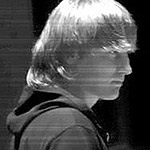 Kurt Lidvart Kurt Lidvart
Sound artist, Russia
History of sound art
Kurt Liedwart — a musician and journalist, the director of the Mikroton Recordings label — will give a lecture on sound art, a interdisciplinary multitude of sound, music and artistic practices with the work with sound, listening and perception as its centre. The sound artists’ range of interests is a very broad one — from deep immersion into the sound itself to study of sound’s interaction with various contexts — architectural, urban, social, political, psychological and even cosmological. In this lecture the history of sound art since the middle of last century will be described together with the dynamic of its thematic development up to now. The lecture will be accompanied by illustrative material, such as audio, video and photo.
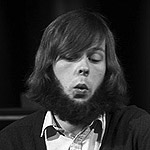 Parl Christian Bjørn Vester — GOODIEPAL Parl Christian Bjørn Vester — GOODIEPAL
Artist, musician, hacker, Denmark
Goodiepal, whose real name is Parl Kristian Bjørn Vester, is a controversial Danish/Faroese musician/composer wanted by the Danish police authorities for an unsolved theft from the Royal Academy of Music in Aarhus. The eccentric and self-made Goodiepal has influenced the course of modern music through radical excursions into computer technology and media art. He performs and lectures about his work and ideas worldwide and has so far done about 150 universities around the world according to the Danish newspager Information. Until recently he has been employed as a teacher at DIEM (Danish Institute for Electro-acoustic Music) at the Royal Academy of Music in Aarhus, Denmark. Goodiepal declared intellectual war against the stupidity in modern computer music and media art, which is to say against The Royal Academy of Music, when he quit the job in 2008.
| 
